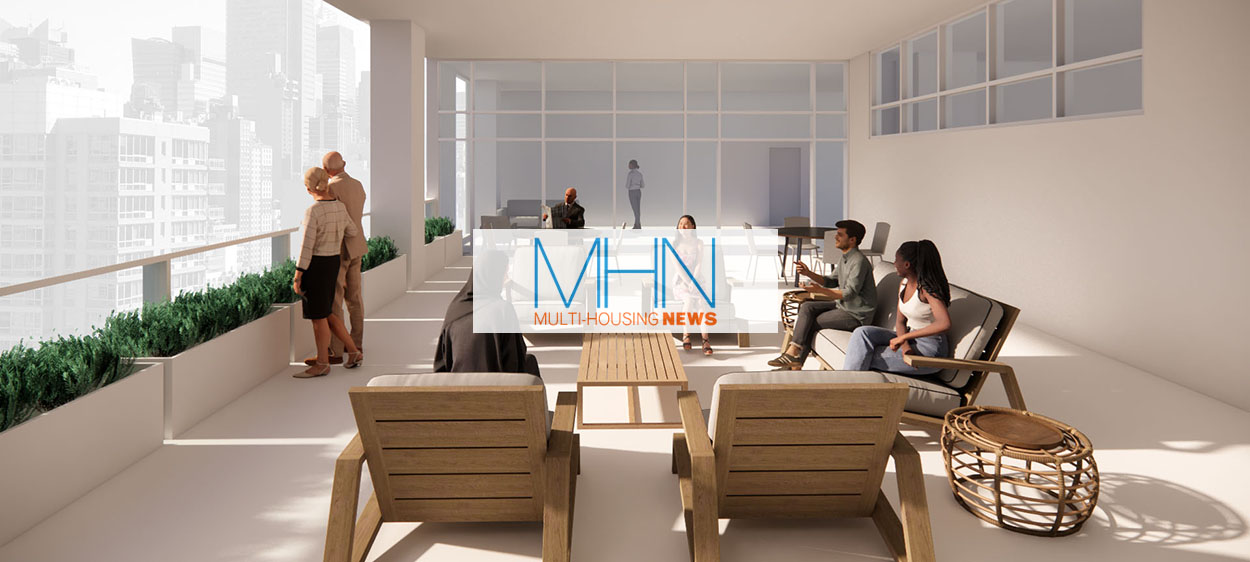by: Jeffrey Steele
Published: Multi-Housing News
Multi-Housing News wrote an article about Studio ST Architects’ speculative commercial-to-residential conversion project, Comm/Version. Read the article below, and view more diagrams and renderings on Comm/Version’s project page.
Architectural firm Studio ST Architects has unveiled a plan to convert a type of empty commercial property in Manhattan into housing to alleviate New York City’s shortage. The project is a response to Mayor Eric Adams’ “City of Yes for Housing Opportunity” initiative, which seeks to increase the metropolis’ housing stock.
The firm’s speculative project would allow for the conversion of a 175-to-135-foot floor plate, a common typology among commercial Midtown Manhattan properties, into a floor plan encompassing more than a dozen studio apartments, as well as two one-bedroom residences. Though these buildings have deeper floorplates than residential structures, they offer the advantage of having windows on all four sides, allowing for units to be located around the entire building perimeter.
The city’s program has proposed building “a little more housing in every neighborhood” to address the shortage of affordable housing for, among others, the city’s homeless and asylum seekers and other migrants.
Announced last year, Adams’ “City of Yes” initiatives marked the third of three proposed city zoning changes aimed at alleviating a years-long housing crisis. In total, the administration has targeted the conversion of 136 million square feet of vacant office space into multifamily homes, potentially creating some 20,000 new units.
Speeding up construction
“Commercial office buildings often have larger floor plates than residential buildings, since many parts of an office suite do not require windows, air and light,” Esther Sperber, principal at Studio ST Architects, told Multi-Housing News. “When converting these larger floors into apartments, the design needs to accommodate the internal areas which cannot be used for bedrooms and living rooms.
“Our design addressed this challenge by adding communal areas in the center of the floors,” said Sperber. “These communal areas included lounge areas, media rooms, cafes and smaller work areas. These shared spaces provide amenities which in turn made the smaller apartments attractive.”
One of Studio ST’s proposals is to save both time and costs by prefabricating residences’ bathroom and kitchen spaces, allowing for them to be delivered to the property and installed on site. The firm also plans to remove and open a portion of the building façade to enable delivery of prefabricated pods to each floor by crane. After this is completed, the open area could be transformed into a communal gathering space.

